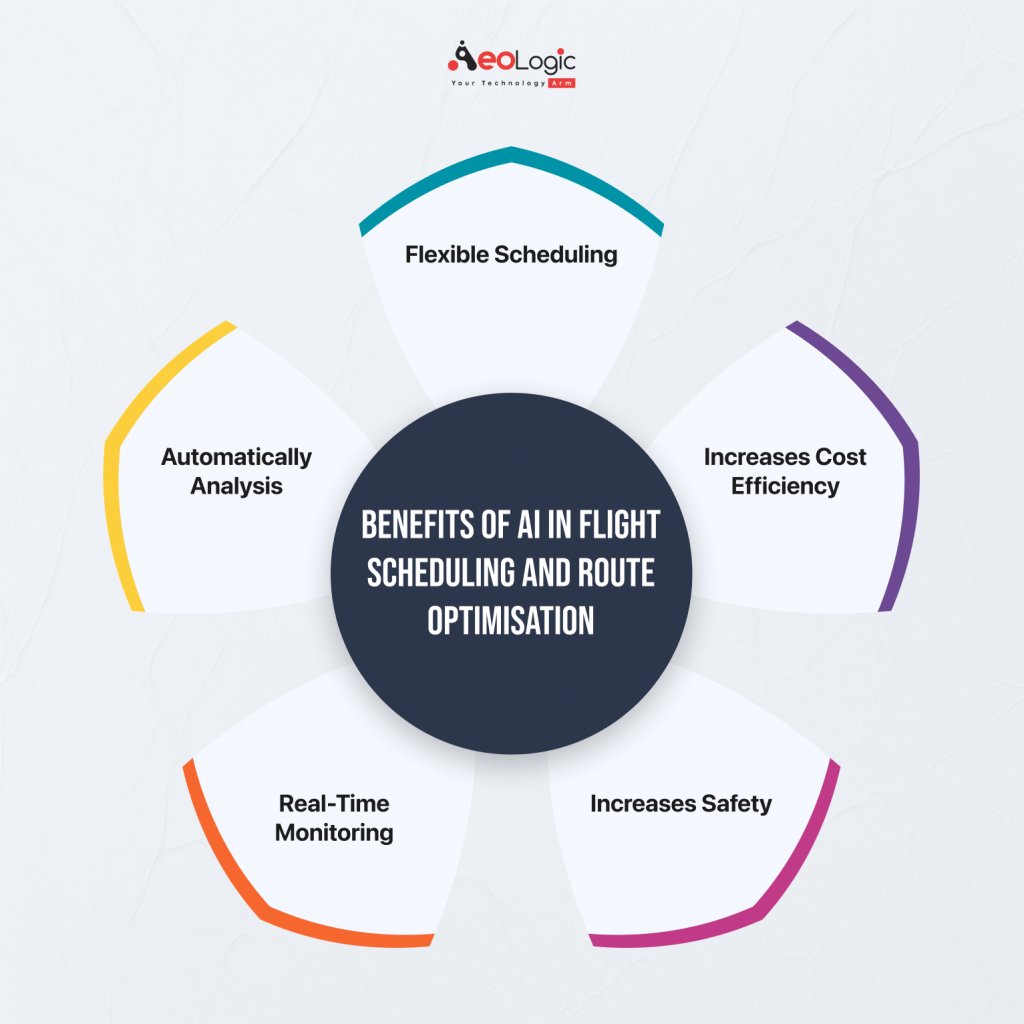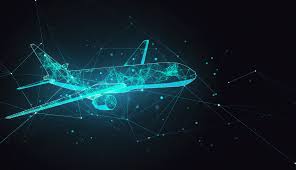The airline industry is the fastest mode of transportation that connects long distances in no time. Not only people, but there are a lot of products that are imported and exported through flights. The airline industry has a very significant impact on the global market, as the global airline market is estimated to touch a value of US$ 810.1 billion in 2024. The market is analyzed to expand at a noteworthy CAGR of 8.8% over the next ten years. It also states that there are more than 100,000 commercial flights per day around the world, which is equivalent to over 400 departures per hour. This number only includes commercial flights and does not include private chartered flights, freight, or military flights.
Challenges in Flight Scheduling and Route Optimization in the Airline Industry
The airline industry operates various operations, among which flight scheduling and route optimization are two of the major aspects. Flight scheduling often happens due to different conditions like bad weather, technical issues, medical issues, clearance of the runway, etc. These issues cannot be avoided, but it is possible to route optimization after scheduling of flight. There are also many cases where during the time of takeoff, everything is good, but suddenly any fluctuation or issues occur. These are very serious issues, and there is a need for something that can predict any risk factor and provide re-optimization of other routes. So the airline industry took the help of AI, and that changed the whole circumstance.
Here’s an overview of the key obstacles:
- Dynamic Weather Conditions
- Air Traffic Congestion
- Operational Constraints
- Fuel Efficiency Concerns
- Passenger Demand Variability
- Integration of AI Technologies
- Regulatory and Safety Requirements
Airlines are using advanced technologies such as artificial intelligence and machine learning to solve these problems. These tools process big data, predict failures and offer real-time solutions. Important steps include working with air traffic control, modernizing weather forecasting and improving older systems with artificial intelligence. By addressing these issues, airlines can achieve efficient, reliable and sustainable operations.
The Role of Artificial Intelligence in Revolutionizing Aviation Operations
Artificial intelligence solutions are the technology that can analyze data and manage flight scheduling and route optimization. Artificial intelligence-powered algorithms constantly modify schedules based on operational restrictions, passenger preferences, weather forecasts, and historical data. These systems may re-optimize flight plans in response to unanticipated circumstances, such as abrupt demand swings or weather disruptions, and they are constantly learning from fresh data.
The worldwide artificial intelligence market size is projected to grow from USD 214.6 billion in 2024 to $1,339.1 billion in 2030, at a compound annual growth rate (CAGR) of 35.7% during the forecast period. Where the global artificial intelligence in aviation market size was valued at USD 1015.87 million in 2024 and is projected to reach from USD 1493.02 million in 2025 to USD 32500.82 million by 2033, growing at a CAGR of 46.97% during the forecast period (2025-2033).
We have seen some stats that prove every statement about the AI for flight scheduling and route optimization, but hold on; there are a lot of servers for you in the coming part of the article. We will see some interesting parts, like benefits and challenges. In the end, we will sign off with a summary on behalf of the whole discussion.
Related Blog: How To Reduce Your Logistics Costs With Route Optimization
What is AI in flight scheduling and route optimization?
In simple words, artificial intelligence is the technology that works on the algorithms of machine learning and natural language processing. AI can enhance flight scheduling that directly optimizes flight schedules based on real-time data and historical data. Where not just flight scheduling, AI can also enhance route optimization by analyzing forecast traffic patterns, weather effects, and other factors to improve routes in real-time. There are many other statements that will solidify the whole discussion, so stay tuned.
Benefits of AI in Flight Scheduling and Route Optimization

So we have passed through some solid parts about the topic and are clear about what we have to get. Now it’s time to know some benefits of flight scheduling and route optimization. Here are a few top benefits mentioned below.
Flexible scheduling
Flexibility matters the most while managing flight scheduling. But this is not possible to manage if an airline analyzes data in a manual way. There can be a high chance of miscalculations that do not get to the right schedule. With the AI, it is possible to analyze various factors like weather conditions, air traffic conditions, etc., that help to prepare a well-timed schedule.
Increases cost efficiency
AI-powered flight scheduling and route optimization not only just make these operations better but also enhance various aspects too. Taking the right route by analyzing weather conditions or air traffic, fuel consumption can be reduced or utilized better. Not delaying flights can also avoid unnecessary compensation for the airline that overall saves a lot of unnecessary expenses.
Increases safety
Safety is the most important and crucial aspect in the airline industry, as a small mistake can result in the loss of several lives. With the AI-powered flight scheduling and route optimization techniques, safety measures are enhanced. For example, a flight has to take off, but there is a possibility of a change in weather conditions. AI can analyze the pattern in weather conditions like wind speed, clouds, etc., that make a flight take off at the right time and on a proper route that enhances the security.
Real-time monitoring
Sometimes, there can be conditions of change in the situation while the plane is in the sky that can create a panic situation. With AI, it is possible to handle the situation in real time, as with the integration with other technology like IoT, real-time monitoring can be achieved. This enables them to make real-time adjustments for a smooth operation of flights.
Automation in panic situations
The human mind is very intelligent, but it is quite natural to panic in critical situations. This can be a concerning thing in situations like technical issues, disruption, medical conditions, etc. AI is not a human, so there is no emotion of panicking, and it can automatically analyze the condition on the basis of data to provide solutions.
Also read: The Crucial Role of Technology in Increasing Logistics Efficiency
Challenges of using AI in Flight Scheduling and Route Optimization
We have passed through the beneficial sides, but now we are going to focus on some challenges that AI brings while implementing it for the airline industry. Here are a few challenges mentioned below.
- Data is very crucial to take out any insights with AI. If any data could be inaccurate or affected, then the whole decision can be affected, and this can result in a serious situation.
- Rapid results can sometimes be a challenging thing with AI, as it takes little time to collect data to analyze and make a result.
- Regulatory compliance can be another issue, as AI cannot be trained on the proper rules and regulations of the airline industry. This can restrict the use of AI in many instances.
Also read: Advantages and Disadvantages of IT in Logistics
Final Words
Artificial intelligence is the type of technology that has gained a lot of success and progress in recent years. This technology’s ability to analyze data is just incredible. It has the potential to provide quick solutions, information, and insights on any topic. In the airline industry, this potential can be used in various terms, especially for flight scheduling and route optimization.
By analyzing vast amounts of data of factors like weather conditions, air traffic, technical aspects, etc., we can make better planning and decision-making. There are definitely some challenges to face, like data quality, regulatory compliance, cost, training, skills, etc., while implementing, but it is totally worth it once implemented. Overall, every airline organization should consider this technology that provides them benefits, safety for passengers, and a lot more for the upcoming years.

I’m Deepika Pandey, an SEO strategist and content writer with 6+ years of experience. I create SEO-friendly content that drives traffic and engages readers. I combine data insights with creativity to help businesses grow their online presence effectively.







